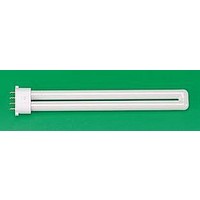DSE112 OSRAM, DSE112 Datasheet - Page 51

DSE112
Manufacturer Part Number
DSE112
Description
LAMP, DULUX, S/E, I, 11W
Manufacturer
OSRAM
Datasheet
1.DD1082.pdf
(82 pages)
Specifications of DSE112
Supply Voltage
75V
Base Type
2G7
Power Rating
11W
Luminous Flux
850lm
Length
214mm
Colour Temperature Typ
5000K
Svhc
No SVHC (15-Dec-2010)
External Diameter
21mm
External Length / Height
214mm
Lamp Base Type
2G7
Rohs Compliant
Yes
Bulb Diameter
21mm
Lead Free Status / RoHS Status
Lead free / RoHS Compliant
Available stocks
Company
Part Number
Manufacturer
Quantity
Price
Company:
Part Number:
DSE112-10A
Manufacturer:
FUJI
Quantity:
30 000
Economical long-life light sources with plug-in bases.
Compact Fluorescent Lamps OSRAM DULUX
Technical Guide
50
4.7
4.7.1 Dimming of OSRAM
DULUX
amalgam lamps
Dimming
®
.../E IN
Important notes regarding the dimming of compact lamps with and without amalgam:
• For optimum operation, new lamps should be aged for 100 hours at full output
• Amalgam lamps react more slowly than lamps without amalgam. For this reason it is
• Colour temperature differences of around 150 K are noticeable between dimmed
• When the lamps are dimmed to the lowest dimmer setting (3 % luminous flux) the
The technical requirements for dimming also apply to amalgam lamps without restric-
tions. Note also that the chemical activity of the amalgam causes a delayed reaction of
the lamp with regard to changes in power. This generally occurs with visible differences
from one lamp to another. When amalgam lamps are dimmed there may therefore be
noticeable differences in brightness and colour perception between lamps of the same
type, even if they are operated under identical conditions.
The luminous flux of free-burning OSRAM DULUX
15 to 30 minutes. In the case of OSRAM DULUX
nous flux stabilises within less than 10 minutes.
These differences in brightness between amalgam lamps of the same wattage can also
occur if the lamps are operated in luminaires with different volumes. In such cases the
different temperatures within the luminaires have an effect.
Amalgam lamps can however be dimmed, with the restrictions mentioned above.
If the lamps are stored or left off for a long period of time (> 20 hours) the mercury may
migrate into the amalgam. At low dimmer settings and ambient temperatures there is
then the possibility that the lamp will produce only very low light output (Hg-free stage,
burning pink). This is caused by a too low discharge temperature (Hg).
The solution is to allow the lamp to operate for about 5 minutes at full output and then
to dim it (no damage to the lamp).
For optimum operation, new lamps should be aged for 100 hours at full output before
they are dimmed for the first time.
before they are dimmed for the first time.
best not to mix the two types in a system.
(3 % luminous flux) and undimmed lamps (100 % luminous flux).
colour temperature shift compared with undimmed lamps is initially around 500 K.
After a stabilization period of 30 to 40 minutes (amalgam lamps) and 20 to
30 minutes (for lamps without amalgam) this reduces to about 150 K.
®
®
®
lamps without amalgam the lumi-
IN lamps stabilises at 100 % after
4. Operating characteristics












